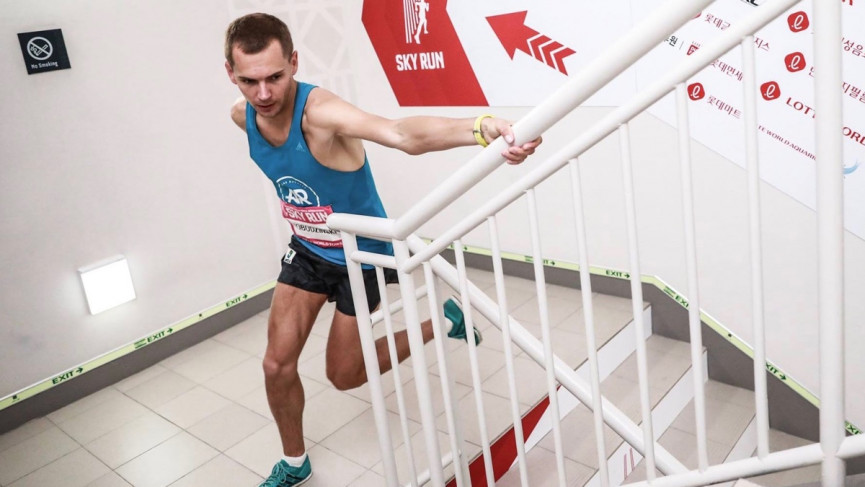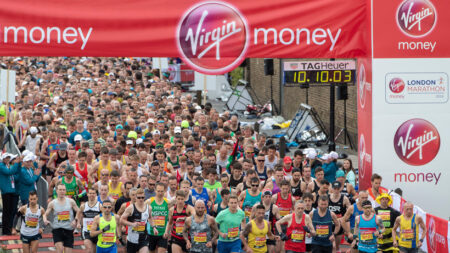The staircase becomes the track – just don't think it's going to be easy
Have you ever peered up at the Empire State Building and thought, “I wonder how long it would take me to run up all the stairs?” Or, more importantly, how much would that hurt?
We can answer both those questions for you: the current record is 9mins 33secs, set by Paul Crake in 2003, and – there are 1,576 steps, taking you up 80 floors. By the top, your legs will be like cooked spaghetti, your lactic acid will be depleted, your lungs will be empty and the only coherent thought you’ll be able to form will be, “At least I don’t have to run down.”
So here’s our complete guide to getting started running vertically.
What is vertical running?

Also known as “tower running”, vertical running is running directly upwards. For that, you need stairs, so it takes place in some of the world’s tallest towers (some people call it tower running). If you’re the kind of person who prefers to hike up a few floors rather than take the lift, this could be for you.
What do you need?
Why should you try it?
Climbing up is very good for your body. Only your lungs and heart have to work hard.”
Top vertical race events
In London, there are usually 4 or 5 races a year. Check out the calendar at Tower Running UK. This year, there are upcoming events at the Park Lane Hilton Hotel, Broadgate Tower and Chapter Spitalfields.
The world tour takes in 24 towers around the globe, including the Eiffel Tower, the Empire State Building and the Taipei 101, and it ends with a vertical marathon up the world’s second tallest building, Shanghai Tower (which, confusingly is not actually a marathon, but rather a single ascent up the stairs – all 3,398 of them).
The equivalent of a marathon in the vertical-running world is the vertical mile, where you repeatedly run up the same tower staircase until you have reached the equivalent of a mile.
Vertical Rush at London’s Tower 42, for example, offers the chance to enter the vertical mile at its next event in March 2020. That will mean summiting the tower 10 times, climbing a total of 9,320 steps in 2-2.5 hours.
How do you train for a tower running event?
Lobodziński told us how he prepares for these events.
“My training is very similar to long-distance runners, but instead of uphills or skipping drills I do stair sessions. I run around 100km on the flat per week, and in winter more than 120k. But I believe it would be no problem for me to row or bicycle instead of running to build endurance.
“If I’m training towards a tower race, I will train in a building’s staircase three times per week and run an easy 10-15k every day. My longest training session was eight times running up 49 floors, and my shortest eight times up 12 floors. Typically, I’ll do 3-4 times up 38 or 49 floors, with a 4-6min rest between when I go down in the lift.”
For someone new to tower running, Lobodziński recommends building endurance before the event. “It’s best to start with flat running, cycling or rowing. Then add some stair repeats – or uphills if you don’t have a high building nearby – one or two times per week. For beginners, 6-8 times 1min up will be enough. Then you can add more repeats or run uphill for longer, say 2-4min.”
It’s useful if you can find stairs near you – it could be in a building (your office, even), or it could be as glamourous as a multi-storey car park. The aim is then to build on your reps. If you can only do one ascent before you’re out of breath, aim for 1.5 next time. All stair climbing, in whatever form, will help you on the day.
Strength training can be hugely beneficial too – especially squats and lunges. Building up muscle in your glutes and hamstrings is key, as they will be doing most of the work on the day.
Who are the vertical running legends?

Lobodziński has dominated tower running for the past six years. He recently ran the Eiffel Tower’s 1,665 steps (276m) in under eight minutes to win the annual Eiffel Tower vertical race for the fifth time in a row.
Suzy Walsham (above) has dominated the women’s category in a similar way. She has won the Empire State Building Run-up nine times in a row, and is going for her 10th victory in May.
What should I know before I start?
Lobodziński warns about going off too fast. “It’s easy to sprint to the 10th or 15th floor, but then you’ll have to slow down or even stop. The first steps you take should be walking, or running with the handbrake on, even if you feel fresh. The pain will begin after 1 minute, so remember to start slow. Even starting slow will be too fast.”
You’ll need to use the handrails to pull you up, especially as you gain height and your legs begin to drain of power, so manoeuvre yourself to the side with the rail (if it is only on one side). If there is a rails on both sides you should use them both to pull you up. It’s also useful to push yourself off the tops of the rails when you reach landings to give your legs a tiny rest.
When running up the stairs, stay on the front of your feet so you don’t waste energy pushing off from your heels, and experiment with walking the stairs two at a time – you might find that’s faster than running them one at a time.





